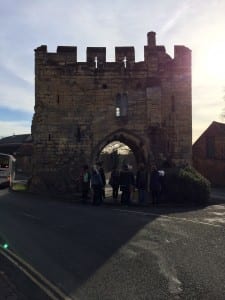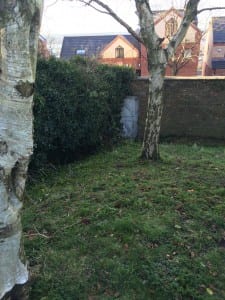Drifting, or ‘meandering’ is becoming ‘increasingly unfamiliar and regarded as aimless and wasting-time’[i] However, whilst strolling ‘one becomes aware of suburban details and social space.’ (Jones, 2010, p.87) During my own experience of ‘drifting’ this week I certainly became more aware of the architecture, history and atmosphere of our given site.
In Pearson’s chapter ‘Models and Approaches’[ii] he highlights the multiple ways in which one can experience and be inspired by a specific site, both as a performer and ‘audience’ member. The chapter made me think about the history of Lincoln, and the different perceptions and memories each individual will have towards the same site as ‘land itself is not regarded as separate from the lived experience’ (Pearson, 2010, p.19). I was interested by Claire Blundell Jones’ ‘Walking, the Western and the tumbleweed’ and the way she uses ‘drifting’ as a performance to ‘create a new playful space between themselves and the unsuspecting audience, who can potentially begin to imagine alternatives in their local environment’ (Jones, 2010, p.87)
The line ‘each surviving doorway was once entered, each window once looked through’ (Pearson, 2010, p.24) was my primary stimuli of inspiration whilst taking photographs around the top of the hill…
Whilst looking through my photographs I also spotted the Latin words ‘pereunt et imputantur’ on one of the sides of the Cathedral walls, which means “They (hours) pass away and are reckoned on (our) account”. This reminded me of Duncan Speakman’s audio walk ‘As If It Were The Last Time’ and again made me consider using audio or creating some sort of ‘spiritual journey’ (also similar to Robert Wilson’s ‘Walking) in our own performances around the Cathedral.
[i] Jones, Claire Blundell(2010) ‘Walking, the Western and the tumbleweed’, Visual Studies, 25: 1, p. 87-88
[ii] Pearson, M, Site Specific Performance (Basingtone: Palgrave Macmillan, 2010)







